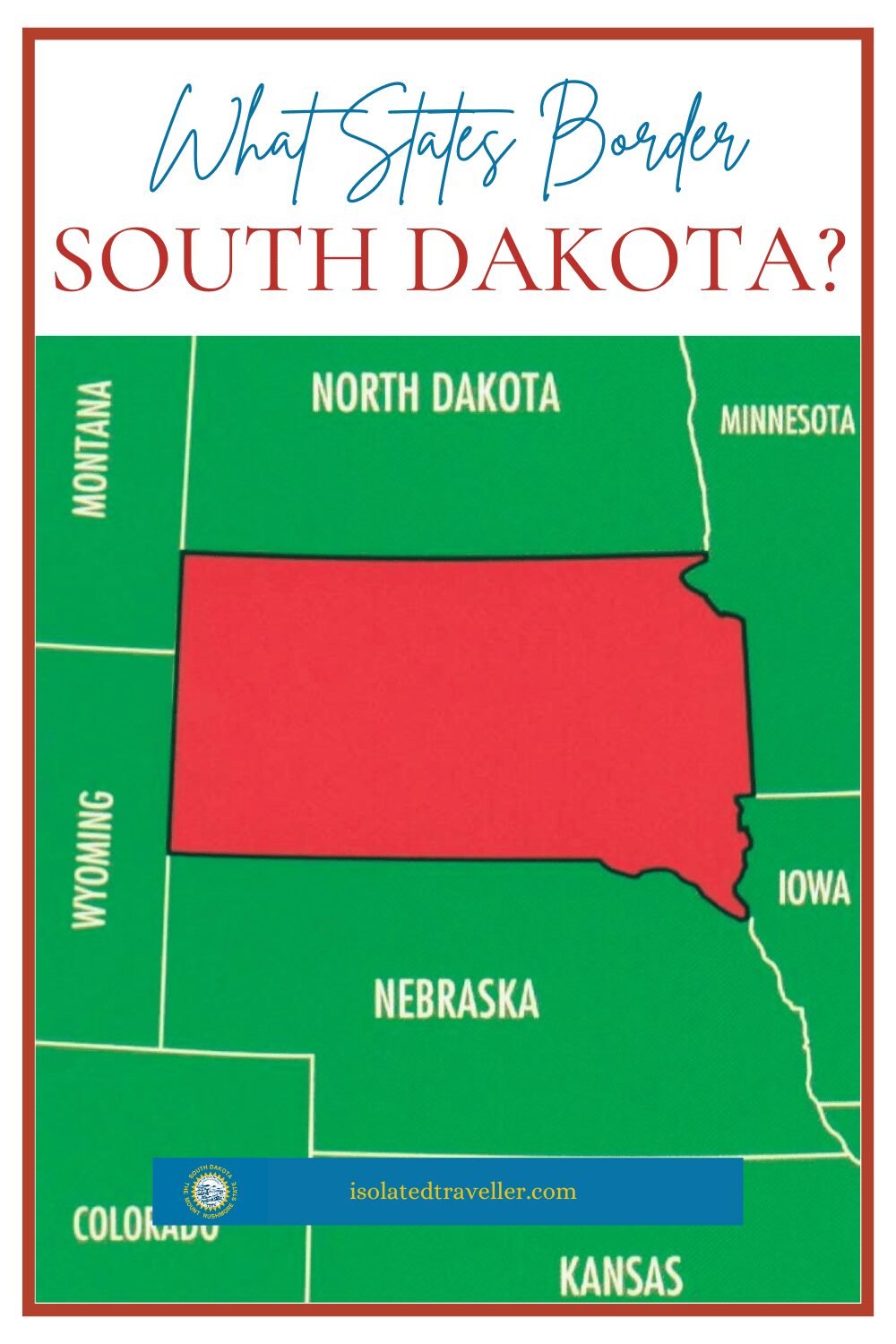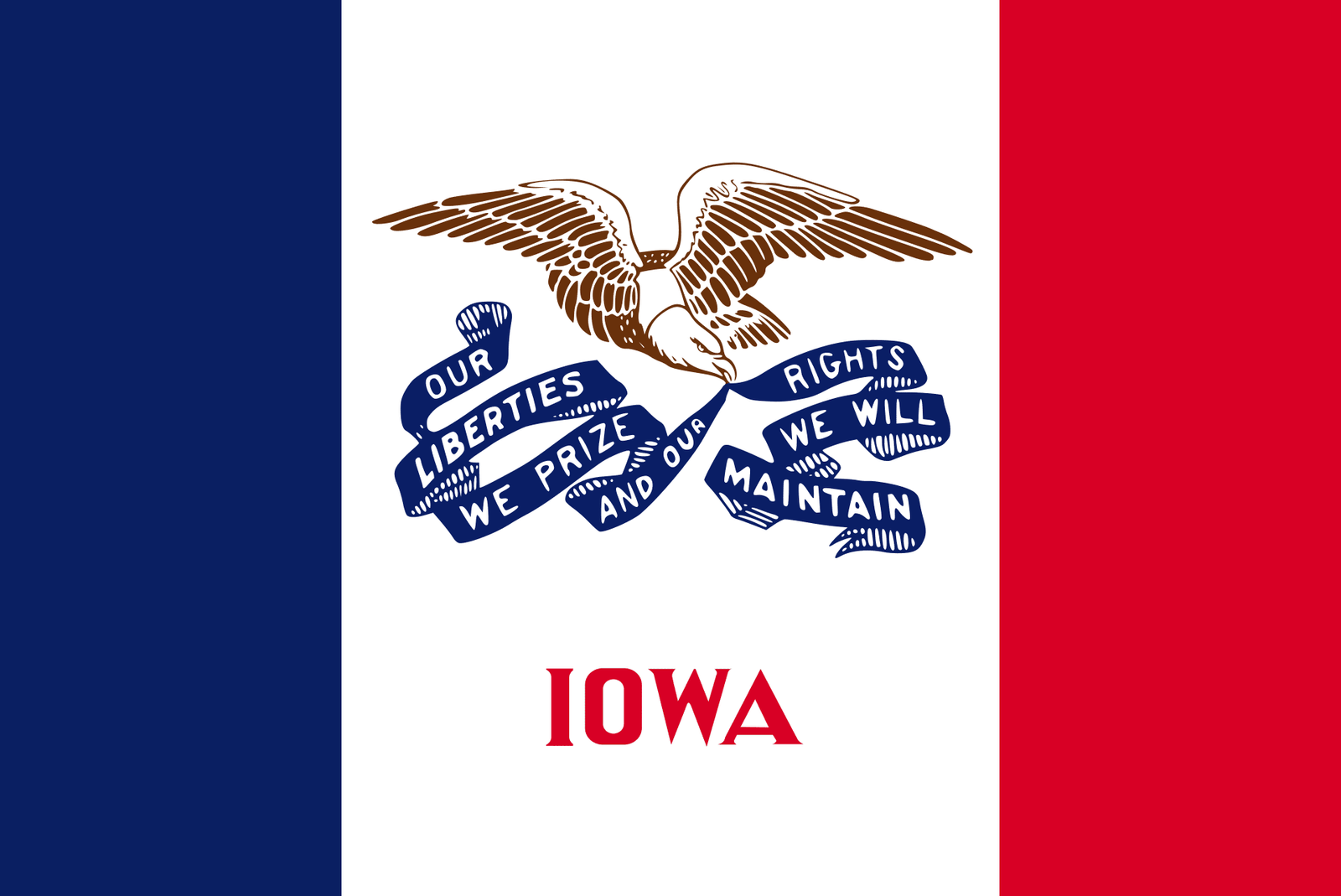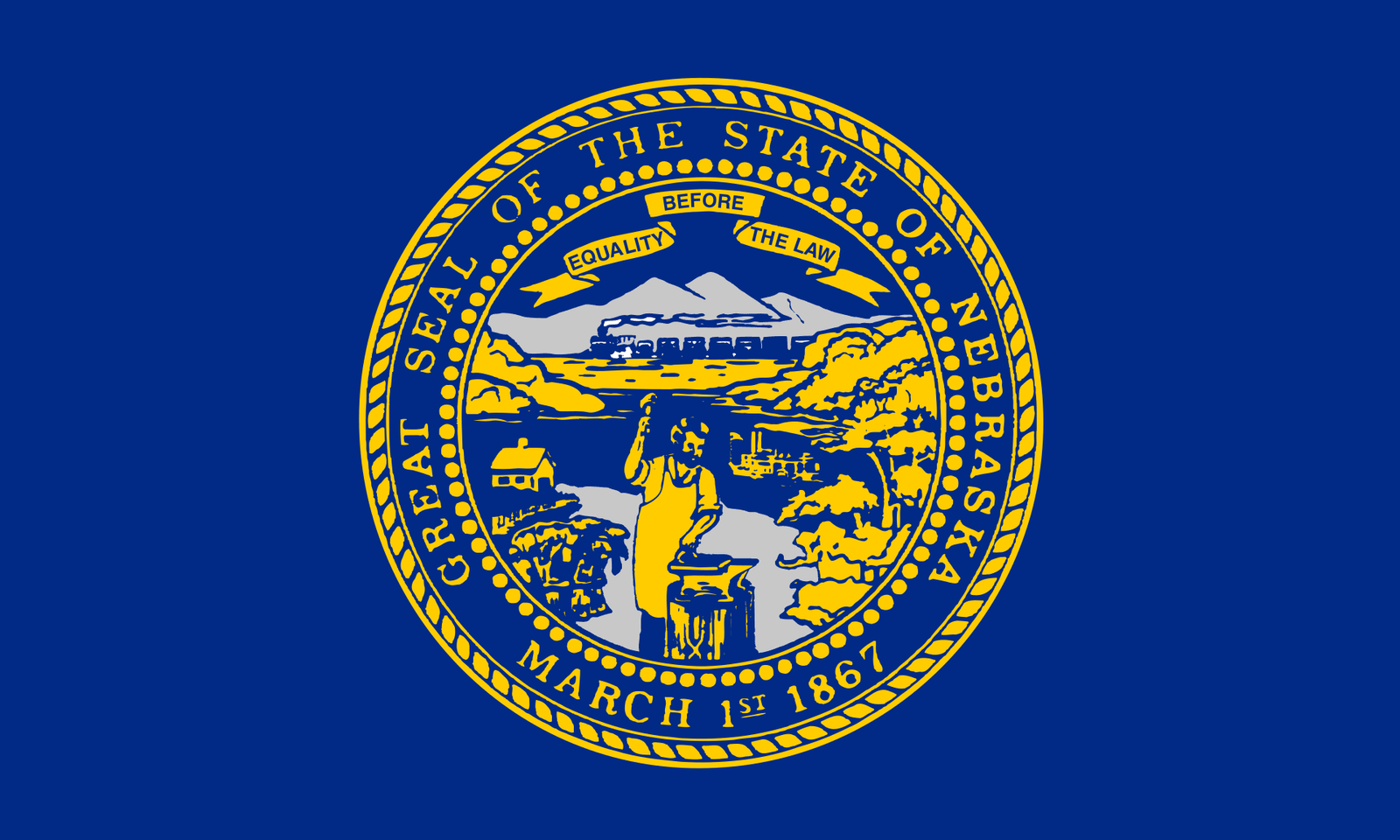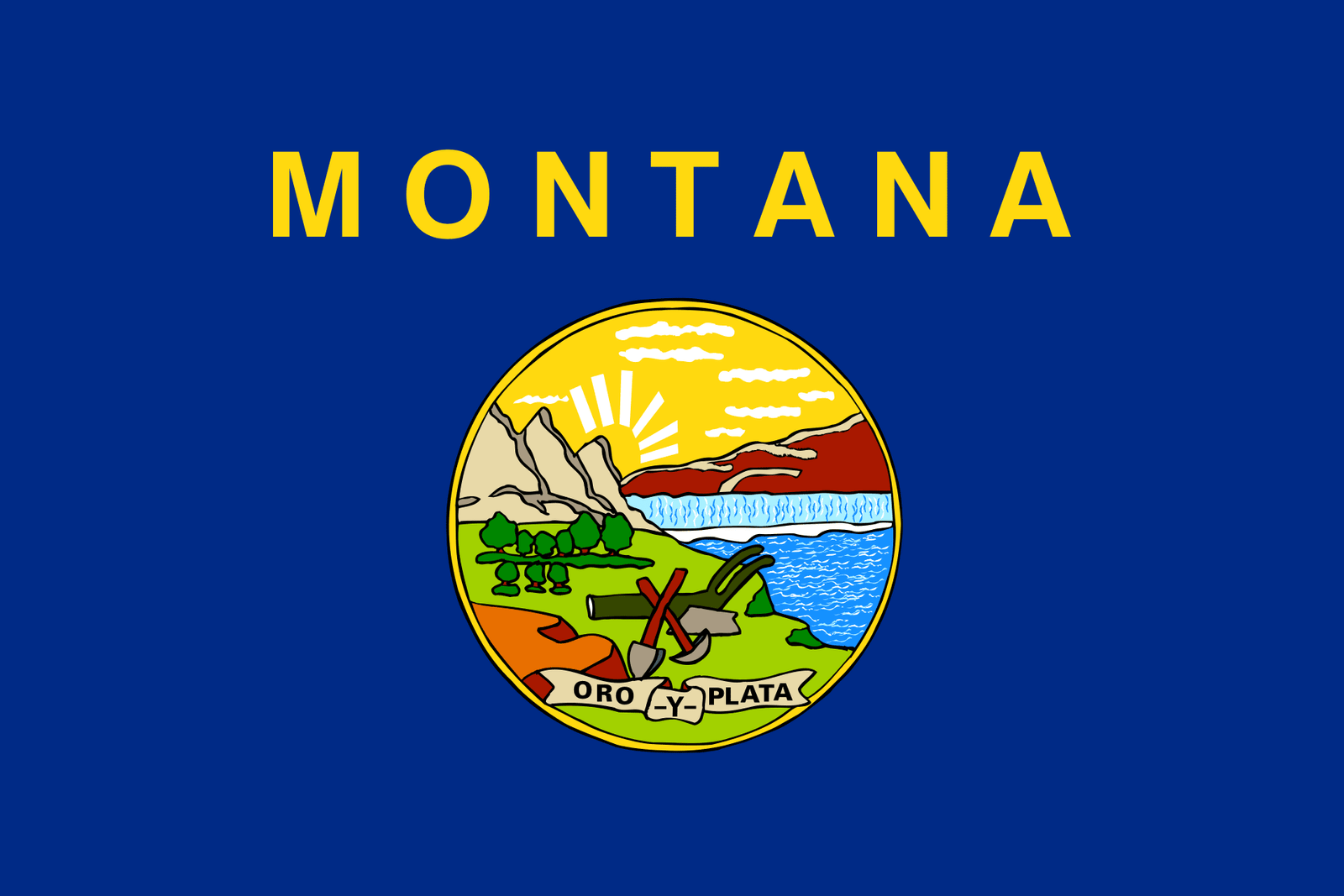What States Border South Dakota?
The states that border South Dakota are North Dakota to the north, Minnesota to the east, Iowa to the southeast, Nebraska to the south, Wyoming to the west, and Montana to the northwest.
List of States that border South Dakota
- North Dakota
- Minnesota
- Iowa
- Nebraska
- Wyoming
- Montana
North Dakota
The border between South Dakota and North Dakota is located in the northern part of South Dakota and it is the longest state border that South Dakota shares. The border follows the 45th parallel, which is a circle of latitude that is 45 degrees north of the Earth’s equatorial plane. This parallel serves as the border for several US states, including North Dakota and South Dakota.
The border between the two states starts at the point where the Red River and the Bois de Sioux River meet, which is located near the easternmost point of South Dakota. The border then runs westward, roughly following the 45th parallel, until it reaches the Montana border in the far west of South Dakota.
The area around the border between the two states is mostly rural, with a mix of farmland, prairie, and small towns. The region is known for its rolling hills, and the Badlands and Black Hills are located in the south of the border. The boundary line between the two states is mostly marked by signs, and it is not physically marked.
Both South Dakota and North Dakota are part of the Great Plains region of the United States and share a similar climate and culture. They also have a strong agricultural industry, particularly for their production of wheat, corn, and cattle.
Minnesota
The border between South Dakota and Minnesota is located in the northeastern part of South Dakota. It starts at the point where the Big Stone Lake, which is located in the extreme southeast corner of South Dakota, meets the Minnesota border. From there, the border runs northwest, following a straight line, until it reaches the point where the Red River meets the Bois de Sioux River, which marks the border between South Dakota and North Dakota.
The area around the border between the two states is mostly rural and is known for its rolling hills, forests, and lakes. The region is also home to several small towns, and many of the residents in this area are engaged in agriculture, forestry, and fishing.
The Minnesota River, which is one of the major tributaries of the Mississippi River, forms a significant portion of the border between the two states. It runs parallel to the border for a considerable distance, and the two states share several lakes and rivers along the border, including Big Stone Lake, Lac qui Parle Lake, and the Chippewa River.
The border between the two states is not physically marked, but it is clearly defined by the use of signs and markers along the roadways. The two states have a healthy relationship, and many residents of both states travel across the border to work, shop, and visit friends and family.
Iowa
The border between South Dakota and Iowa is located in the southeastern part of South Dakota. The border starts at the point where the Big Sioux River meets the Iowa border, and it runs westward, following a straight line, until it reaches the point where the Big Sioux River meets the Missouri River.
The area around the border between the two states is mostly rural and is known for its rolling hills and prairies. There are several small towns located along the border, and many of the residents in this area are engaged in agriculture, particularly for their production of corn and soybeans.
The Big Sioux River, which runs from South Dakota into Iowa, forms a significant portion of the border between the two states. The river is used for recreational activities such as fishing and boating, and it also serves as a source of irrigation for farmers.
The border between the two states is not physically marked, but it is clearly defined by the use of signs and markers along the roadways. The two states have a healthy relationship, and many residents of both states travel across the border to work, shop, and visit friends and family.
Nebraska
The border between South Dakota and Nebraska is located in the southern part of South Dakota. The border starts at the point where the Missouri River meets the Nebraska border and runs westward, following a straight line, until it reaches the point where the White River meets the Nebraska border.
The area around the border between the two states is mostly rural and is known for its rolling hills and prairies. There are several small towns located along the border, and many of the residents in this area are engaged in agriculture, particularly for their production of corn, soybeans, and wheat.
The Missouri River, which forms a significant portion of the border between the two states, is an important resource for the area. The river is used for recreational activities such as fishing and boating, and it also serves as a source of irrigation for farmers. The river also serves as a boundary between the two states, and it is an important natural and cultural resource.
The border between the two states is not physically marked, but it is clearly defined by the use of signs and markers along the roadways. The two states have a healthy relationship, and many residents of both states travel across the border to work, shop, and visit friends and family.
Wyoming
The border between South Dakota and Wyoming is located in the western part of South Dakota. The border starts at the point where the Wyoming border meets the Nebraska border, and it runs eastward, following a straight line, until it reaches the point where the Wyoming border meets the Montana border.
The area around the border between the two states is mostly rural, with a mix of prairies and mountains. The Black Hills, a range of mountains that includes famous landmarks such as Mount Rushmore and the Crazy Horse Memorial, are located in the south of the border. The region is also known for its rich history, and it was home to several Indigenous tribes, such as the Lakota Sioux and Cheyenne.
The border between the two states is not physically marked, but it is clearly defined by the use of signs and markers along the roadways. The two states have a healthy relationship, and many residents of both states travel across the border to work, shop, and visit friends and family. The Black Hills region, which is a popular tourist destination, draws visitors from both states as well as from other parts of the country and the world.
Montana
The border between South Dakota and Montana is located in the northwestern part of South Dakota. The border starts at the point where the Wyoming border meets the Montana border and runs southeast, following a straight line, until it reaches the point where the Montana border meets the North Dakota border.
The area around the border between the two states is mostly rural and is known for its rolling hills, prairies, and forests. The Badlands, a unique geological formation that includes rugged terrain, deep canyons and unique rock formations, is located in the south of the border. The region is also home to several small towns, and many of the residents in this area are engaged in agriculture, forestry, and mining.
The border between the two states is not physically marked, but it is clearly defined by the use of signs and markers along the roadways. The two states have a healthy relationship, and many residents of both states travel across the border to work, shop, and visit friends and family. The Badlands region, which is a popular tourist destination, draws visitors from both states as well as from other parts of the country and the world.
Flags of States that border South Dakota
|
|
|
|
|
|
|
|
|
Related Articles








